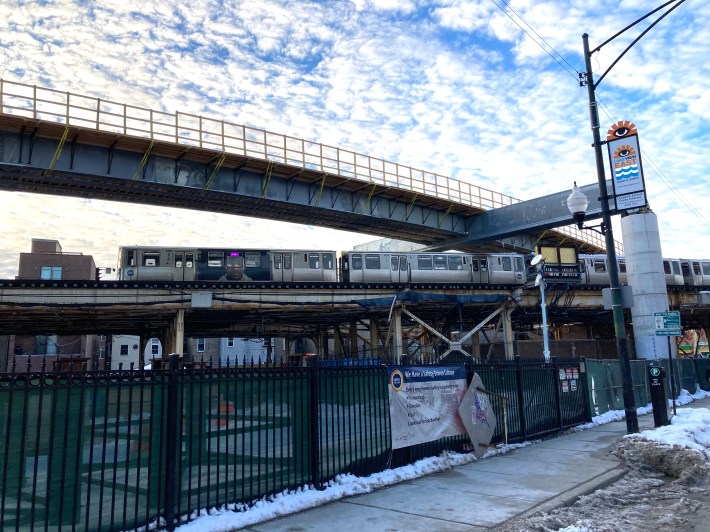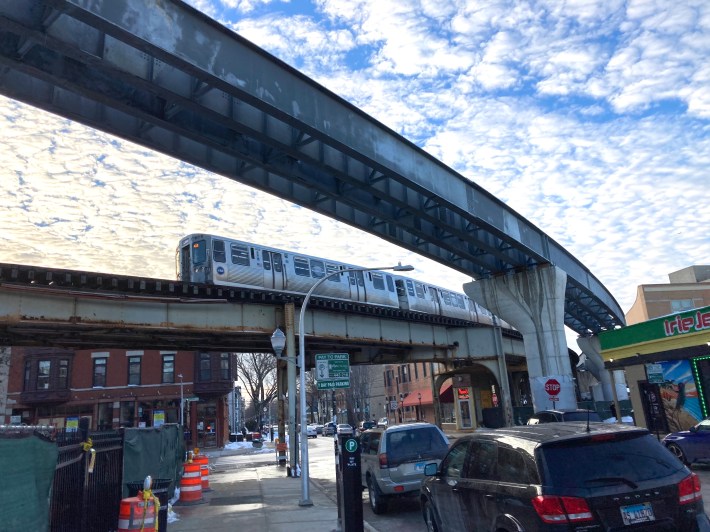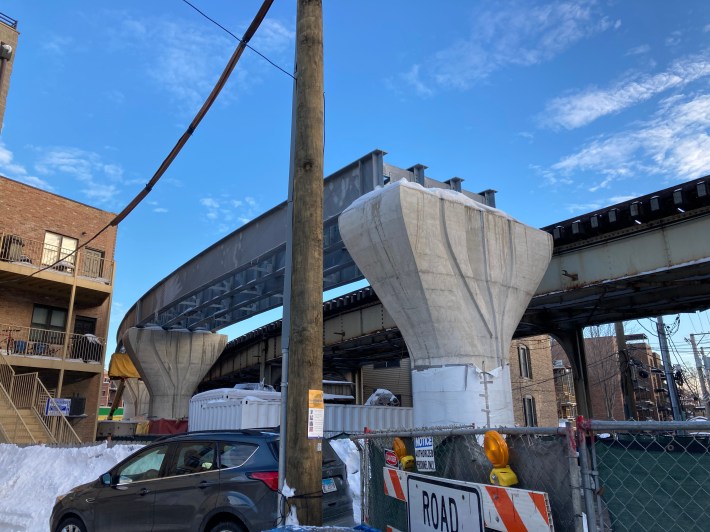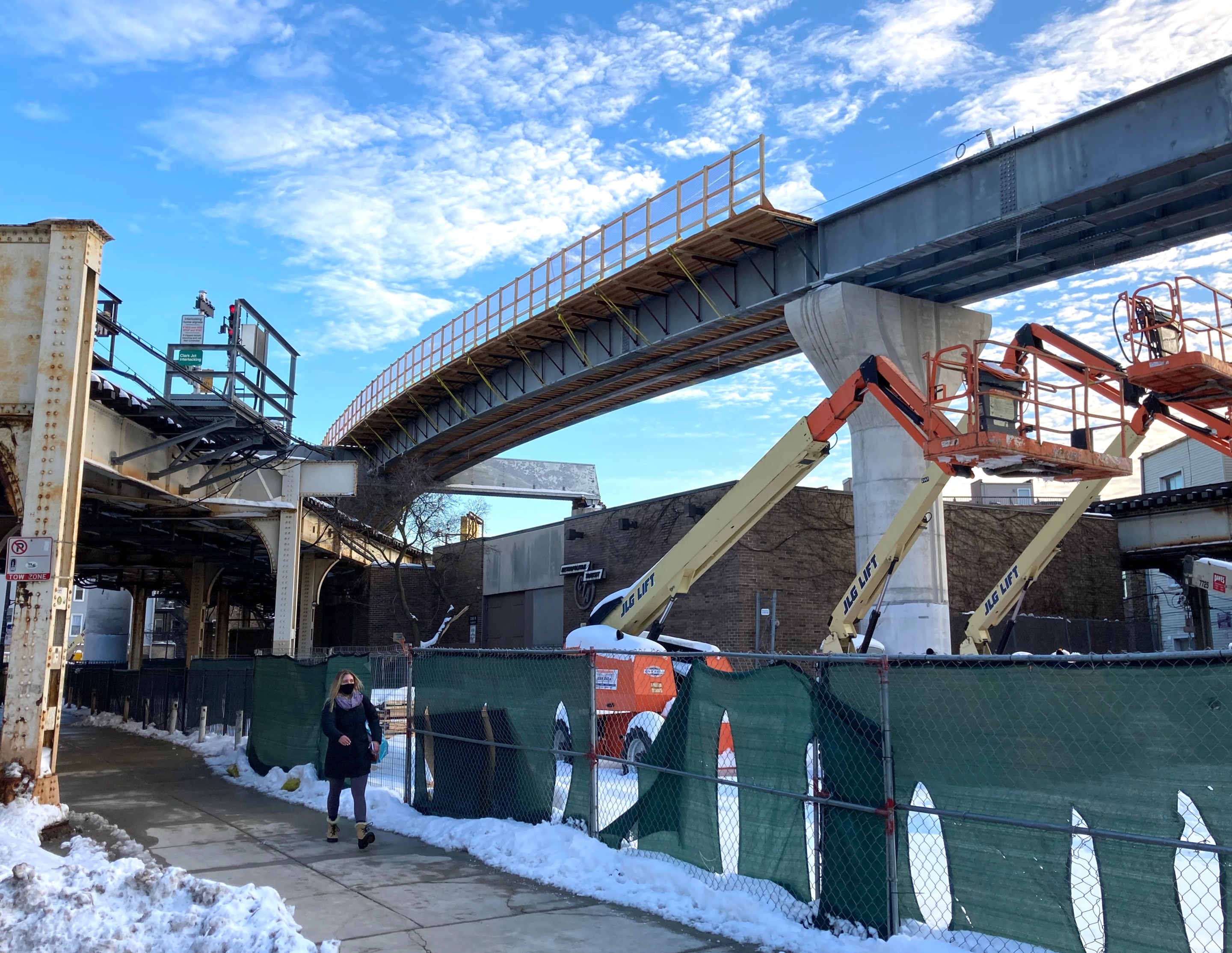The CTA appears to have recently made major progress on Belmont Flyover, officially called the Red-Purple Bypass, which will unclog the junction of the Red, Brown, and Purple lines in Lakeview as part of the massive $2 billion Red and Purple Modernization project. The flyover work, which started in 2019, is scheduled to wrap up this year. It will be followed by the reconstruction of Red and Purple track structure between the Belmont stop and roughly Cornelia Avenue, a block north.

Last month there were two weekend service disruptions on the Red Line between Belmont and Addison so that contractors could install structural supports for the flyover, which will serve northbound Brown trains. RPM project contractor Walsh-Fluor has been doing the following work:
- Placing the straddle bent that connects the columns on either side of the Belmont Flyover tracks
- Installing steel girders that form the backbone of the Red-Purple Bypass

The CTA says the Belmont Flyover will improve reliability on the three lines, improve speeds, reduce crowding, allow the agency to run more trains during rush hours. The bypass replaces the Belmont rail junction, which was built in 1907 and carried about 150,000 rides each weekday prior to the COVID-19 pandemic, when the transit system has seen a massive ridership drop. Here are the upcoming benefits of the flyover, according to the transit agency.

- The addition of up to eight more Red Line trains per hour during rush periods
- Accommodating up to 7,200 additional customers per hour during rush hour

- Increased Red and Purple line train speeds by 60 percent through this intersection
- Customers are saved a half-million travel hours each year

In addition to the flyover, Phase One of RPM also includes rebuilding the century-old rail structure between the Lawrence and Bryn Mawr stations and rebuilding four stations on that stretch to make them wheelchair accessible. This work is expected to start this year. We'll have a critique of the recently-released station designed later this week.





